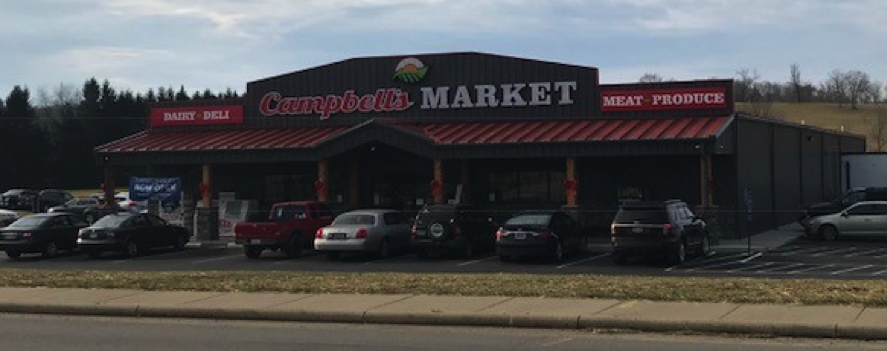By Diana Turoff, President and CEO of Finance Fund Capital Corporation
For nearly four years, the only option for over 13,000 Vinton County residents to buy fresh produce, meat, dairy, and other healthy foods was to travel many miles to another county. That obstacle has been remedied by the long-awaited grand opening of Campbell's Market, a new full-service grocery store located at 630 W. Main Street in McArthur, Ohio.
The new store is the result of a collaborative effort among many partners, including local community members, the Campbell family, Finance Fund Capital Corporation (FCAP), The Food Trust, and representatives from local, state, and federal governments. FCAP, a statewide community development financing institution, provided funding for the project through its Healthy Food for Ohio (HFFO) program. The HFFO program is Ohio’s first ever statewide healthy food financing program and provides flexible financing to eligible rural and urban healthy food retail projects in low-income, underserved areas throughout the state. Through this program, Campbell’s Market received nearly $1.6 million in financing to build a 12,000-square-foot full-service grocery store.
The HFFO program was created by a statewide coalition of nearly 50 health, grocery, business, civic, and economic development leaders who joined together as the Ohio Healthy Food Financing Task Force. One of the key recommendations coming from the task force was the creation of a financing program such as HFFO, to help grocers overcome the unique barriers they face to open and remain open in underserved areas.
FCAP received over $2 million from the State of Ohio to fund healthy food retail projects statewide through the HFFO program. To date, the HFFO program has invested nearly $5 million for nine healthy food projects, creating almost 200 jobs and providing close to 70,000 Ohioans with much-needed fresh food access.
Campbell’s Market in McArthur celebrated its grand opening and ribbon-cutting ceremony on December 4. U.S. Congressman Steve Stivers exclaimed, "Today, we get to declare the food desert in Vinton County OVER!" He thanked a gathering of community members as well as the Campbell family, FCAP President and CEO Diana Turoff, State Representative Ryan Smith, and State Senator Bob Peterson for their impactful contributions that made this project possible. This store has already attracted additional businesses, created over 30 jobs for local residents, and improved the quality of life for this community.
For over 30 years, Finance Fund has connected underserved communities with public and private sources of capital to help spark community development and create jobs in distressed communities statewide. Learn more about Finance Fund at http://www.financefund.org/about-us/ and the Healthy Food for Ohio program in the View Policy Efforts by State section.
*The views and opinions expressed in this article are those of the author and do not necessarily reflect the position of The Healthy Food Access Portal.

